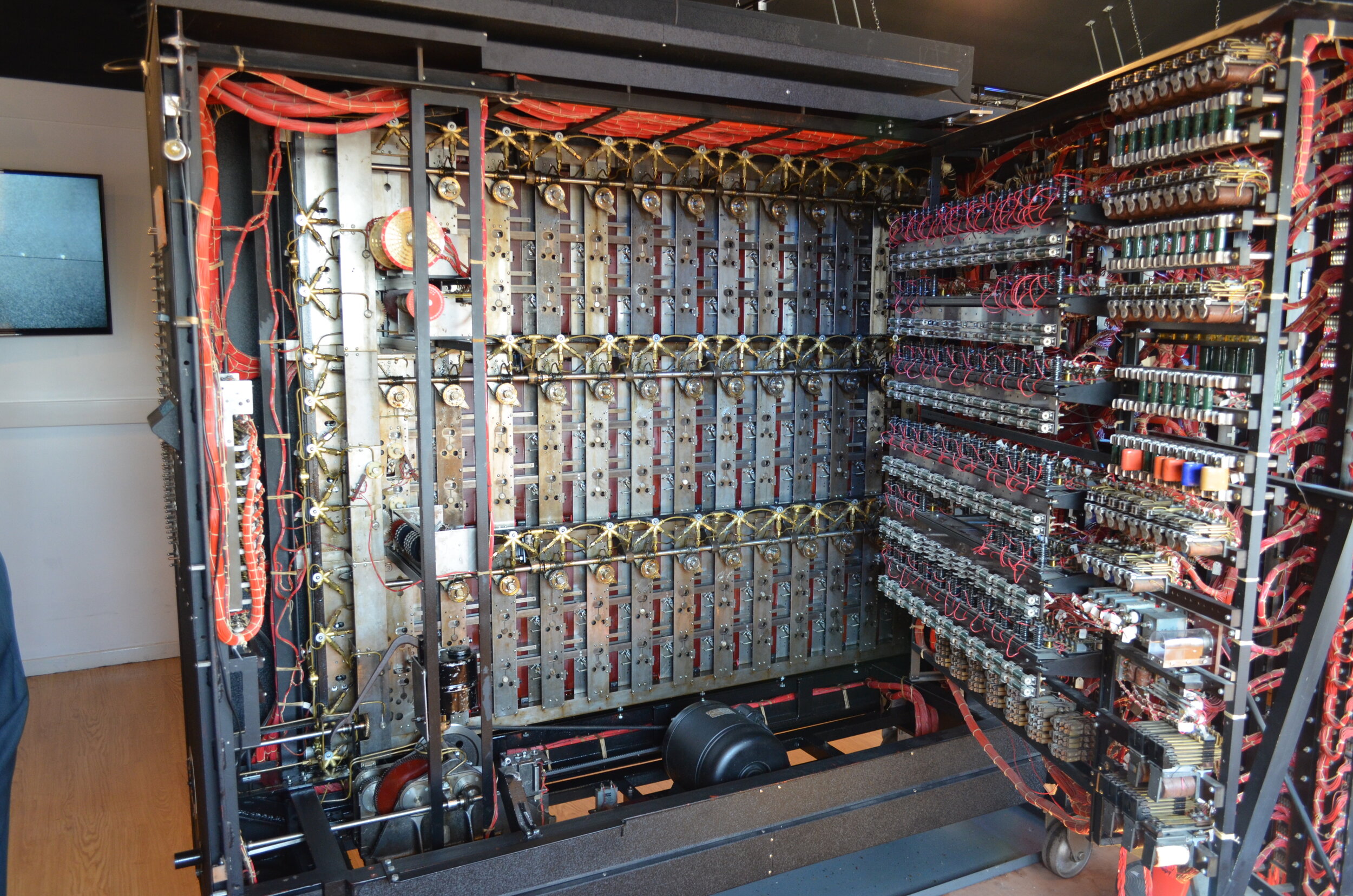12 - Types of Bombe
Jumbo: Similar to a basic three-wheel machine but designed to work with weak menus. Did not have indicator drums but had an electric typewriter which recorded ‘stops’. Post Office-type uniselectors were used to recover information and transmit to the typewriter a character at a time. The noise made by the uniselectors turning in synchronisation sounded like a machine gun, the term used to describe this process.
Ogre: This machine involved two Bombes constructed together, and it was used for breaking messages using the pluggable Reflector D.
Giant: This was four High Speed Keen Bombes bolted together on huge girders. Special mechanical and electrical connections allowed the four to operate as one complete massive machine. This set up stayed at Letchworth and ran from around June 1944 to early 1945 in a secure area under direct Bletchley Park control.
Four-Wheel Machines
WW: Almost certainly stands for Wynn-Williams, who devised the GPO version of the early British four-wheel Bombe. His attachments were connected to this version of a BTM Bombe.
Cobra: To the BTM section of the Cobra were attached units built by Mawdsley of Dursley in Gloucestershire, in which commutators and carbon brushes acted as the fourth, very fast wheel. A Flowers/GPO sensing unit completed the set-up. To avoid dust from the carbon brushes and the noise, the Cobra was divided from the three-wheel Bombe by a wall through which was a hole which connected the Cobra with the Bombe. Because many cables ‘snaked’ between the two units it was given the name Cobra. The Cobra used valves.
High Speed Keen: This was the main UK four-wheel machine, and was the faster version of the basic BTM machine, with the 36 very fast wheels added at the right-hand end.
BTM fourth wheel attachment: A free-standing unit on its own castors. It had no power but allowed a further set of 36 (4 x 9) very fast drums to be connected into the menu.
(c) John Jackson


